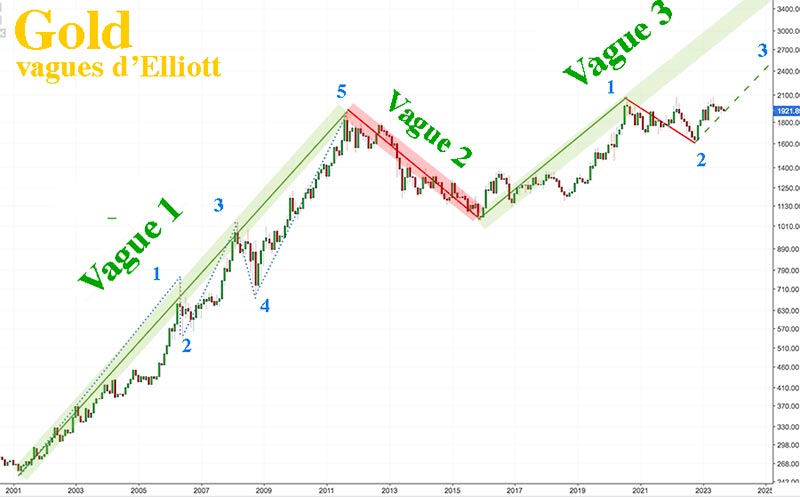In a constantly evolving economic context, the importance of precious metals, like thegold, cannot be ignored. However, a crucial government decision regarding removal of reimbursement rates precious metals seems to have escaped general attention. This omission raises questions about the tax implications for investors and individuals holding these assets. The impact of this measure on the housing marketgold and purchasing behavior, as well as the perception of its safe haven, deserves particular attention as investment opportunities evolve rapidly.
In a context where the market for precious metals is evolving, the removal of reimbursement rates proves to be a crucial point often overlooked. This decision, which has considerable impacts on investors and the market, deserves our attention. This article explores the implications of this removal, the associated tax issues and how it could redefine the rules of the game for those who hold precious metals, includinggold.
Table des matières
ToggleChanging regulations
There regulation precious metals, and more particularly that ofgold, has gone through major developments in recent years. In 2019, the finance law introduced significant changes, in particular the elimination of contributions to the package for precious metals. This development has raised a number of questions among investors, who must now navigate a different legal framework, without the redemption rates previously in place.
Tax issues: a slippery slope
One of the major challenges facing holders ofgold resides in the taxation. With the elimination of reimbursement rates, new tax perspectives emerge. For example, while gold is exempt from taxes on detention, the sale ofprecious objects must now be considered with caution. If you plan to sell gold coins, it is essential to inform yourself about the tax implications that could apply after a period of 22 years of holding, where a total exemption from capital gains becomes accessible. For details, see this useful link: Special taxation on gold.
Comparison with other investments: gold vs real estate
L’gold is often cited as a financial refuge, especially in comparison to thereal estate. Besides its taxation favorable, it has unique characteristics. Unlike real estate, which can be subject to high capital gains taxes on sale, investing in gold offers some security with regard to taxation on holding. Thus, in the face of economic instability, gold is positioned as a safe haven for many investors. For those wondering which option is better, this link might provide some valuable information: Gold or real estate: which is the best safe haven?.
Market reaction to these changes
Since the removal of reimbursement rates, a certain movement has been observed on the market for precious metals. The absence of these rates has stimulated increased interest ingold, particularly due to the price rise of certain raw materials. The prospect of an increase in oil pricesgold, with forecasts of up to $2,400 per ounce, is likely to revitalize investments in this area. Investors should therefore pay attention to market trends, especially in light of the decisions of the Fed concerning interest rates which directly influence investments in thegold.
Conclusion: increased vigilance necessary
In short, the government’s removal of reimbursement rates for precious metals is not without consequences. This change results in a need for increased vigilance for those investing ingold and the precious metals. Stay informed and prepare to adapt your investment strategies accordingly. For detailed advice on regulations relating to the sale of precious metals, visit regulations on precious metals.

In a constantly evolving economic context, it is important to stay informed of new regulations, particularly those concerning precious metals such as gold. Recently, the removal of reimbursement rates has raised questions. This article will highlight the impacts of this measure and provide tips for navigating this complex landscape.
The impacts of removing reimbursement rates
The decision to remove reimbursement rates for precious metals has important implications for investors. Indeed, this can affect the profitability of investments in gold, as the rules governing redemption can make accumulation more complex. Gold enthusiasts must now readjust to this new environment to optimize their investment strategy.
Understanding precious metal taxation
One of the aspects to consider is the taxation linked to the holding and sale of gold. Unlike other assets, gold benefits from no taxation on holding, making it an attractive choice for some investors. However, it is essential to remember that capital gains made on sale may be subject to taxation after a certain holding period. A thoughtful strategy can help you make the most of these tax benefits.
Anticipate and adapt to changes
Regulatory changes are often an opportunity in disguise. Gold investors should anticipate these changes and adjust their approach. By staying informed of new laws and regulations, as well as participating in precious metals forums or seminars, you can develop a better understanding of the market and its fluctuations. This will allow you to make more informed and beneficial decisions.
Tips for selling gold in the new environment
When considering selling gold, it is crucial to be well prepared. Seek to understand how the new regulations work and consider contacting experts in precious metals to receive appropriate advice. Also keep in mind that the gold market is subject to fluctuations, and being familiar with these variations can help you choose the right time to sell for the best price.
Stay informed of developments in the market precious metals is of paramount importance to anyone interested in gold. By incorporating these tips and tricks into your strategy, you can successfully navigate an ever-changing landscape and maximize your gold investments.
La hausse des cours des métaux précieux devrait se poursuivre sur le reste de l'annéehttps://t.co/fKOZxscWBo
— Médias24 (@Medias24) July 16, 2024
The current situation of the gold market
In a tumultuous economic context, gold is asserting itself as a safe haven unavoidable. Recently, the removal of reimbursement rates precious metals was the subject of discussion. This decision could have significant repercussions for investors and owners of precious metals assets. This article examines the implications of this government measure and provides recommendations for navigating this new environment.
The consequences of removing reimbursement rates
The removal of reimbursement rate has caused great concern among investors and holders of gold, silver and platinum. Without this mechanism, resale values could fall. Investors must then ask themselves how this lack of government support will influence their investments in precious metals.
It is essential to keep an eye on price fluctuations, as economic dynamics could significantly impact the value of these assets. Investors should prepare for increased market volatility, which requires constant vigilance and adaptation.
Understand the regulations in force
Before investing or selling, it is crucial to understand the regulations current information regarding precious metals. The finance law for 2019, followed by that for 2024, is a key element to take into consideration. The new regulations modify not only taxation, but also the treatment of capital gains on sales.
Investing in gold could benefit from a strategic approach to mitigate the effects of new tax constraints. On the other hand, the differences between selling gold and managing real estate in terms of taxation must be carefully noted to avoid unpleasant unforeseen events.
Investment strategies to adopt
In this changing context, several strategies can strengthen an investor’s position. First, diversifying your investment in combinations of precious metals could reduce risks. By not only using gold, but also silver and platinum, we optimize our potential return on investment.
Additionally, maintaining some liquidity is essential. If necessary, being able to liquidate assets quickly will help navigate an uncertain economic environment. Considering low-cost purchases during downturns could also prove beneficial.
Stay informed of market trends
Market trends for precious metals are constantly evolving. Investors should keep themselves informed of regulatory developments and tax as well as price fluctuations. Subscribing to financial alerts, following economic news and participating in investment forums can be helpful in making informed decisions.
Experts also advise monitoring economic forecasts to anticipate major trends. This can help make informed decisions about the best time to buy or sell.
Evaluate the applicable taxation
Finally, understand the taxation precious metals is crucial for any investor. Indeed, the holding of gold is generally exempt from taxes, but capital gains on sales may be subject to taxes. It is essential to analyze these aspects to best plan any transaction.
Expert tax advice can provide an informed perspective on how to take advantage of this exemption while remaining compliant with the law. Anticipating future tax obligations is therefore a wise strategy to maximize your return on investment in precious metals.








